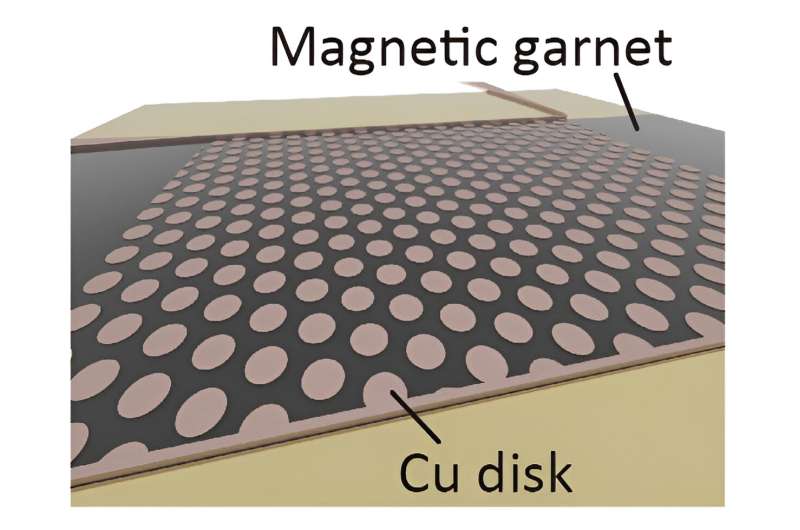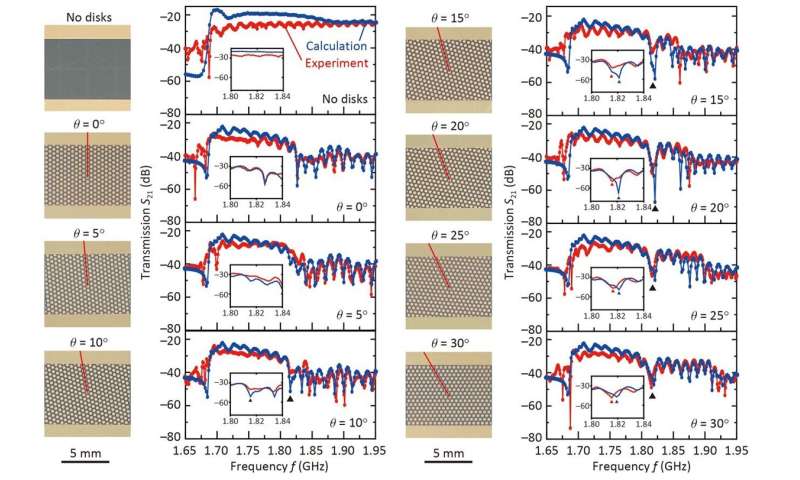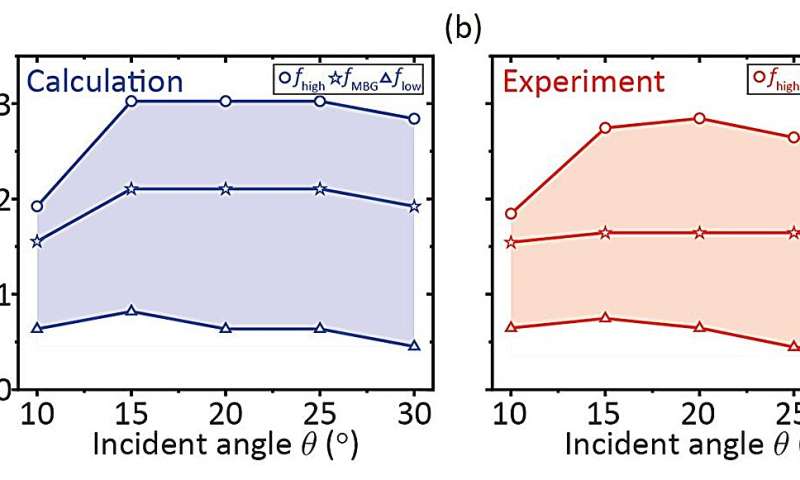This article has been reviewed according to Science X's editorial process and policies. Editors have highlighted the following attributes while ensuring the content's credibility:
fact-checked
trusted source
proofread
Hexagonal copper disk lattice unleashes spin wave control

A collaborative group of researchers has potentially developed a means of controlling spin waves by creating a hexagonal pattern of copper disks on a magnetic insulator. The breakthrough is expected to lead to greater efficiency and miniaturization of communication devices in fields such as artificial intelligence and automation technology.
Details of the study were published in the journal Physical Review Applied on January 30, 2024.
In a magnetic material, the spins of electrons are aligned. When these spins undergo coordinated movement, they generate a kind of ripple in the magnetic order, dubbed spin waves. Spin waves generate little heat and offer an abundance of advantages for next-generation devices.
Implementing spin waves in semiconductor circuits, which conventionally rely on electrical currents, could lessen power consumption and promote high integration. Since spin waves are waves, they tend to propagate in random directions unless controlled by structures and other means. As such, elements capable of generating, propagating, superimposing, and measuring spin waves are being competitively developed worldwide.
"We leveraged the wavelike nature of spin waves to successfully control their propagation directly," points out Taichi Goto, associate professor at Tohoku University's Electrical Communication Research Institute, and co-author of the paper. "We did so by first developing an excellent magnetic insulator material called magnetic garnet film, which has low spin wave losses. We then periodically arranged small copper disks with diameters less than 1 mm on this film."
-

Fig. 2. Top-view photograph of the fabricated two-dimensional magnonic crystal and the spin wave transmission spectrum at that time. Even when the two-dimensional magnonic crystal is rotated by 5 degrees at a time, it can be seen that the frequency of the magnonic band gap indicated by ▲ remains almost unchanged. This suggests a low angular dependence and the potential for controlling the propagation direction of spin waves. Credit: Taichi Goto et al -

Fig. 3. A summary of the results obtained in Figure 2, with the angle of the two-dimensional magnonic crystal on the horizontal axis and the magnonic band gap on the vertical axis. The calculations in (a) and the experiments in (b) are in good agreement, showing a small frequency shift and excellent performance. Credit: Taichi Goto et al
By arranging copper disks in a hexagonal pattern resembling snowflakes, Goto and his colleagues could effectively reflect the spin waves. Furthermore, by rotating the magnonic crystal (shown in Figure 2) and changing the incident angle of spin waves, the researchers revealed that the frequency at which the magnonic band gap occurs remains largely unchanged in the range from 10 to 30 degrees. This suggests the potential for the two-dimensional magnonic crystal to freely control the propagation direction of spin waves.
"To date, there have been no experimental confirmations of changes in the spin wave incident angle for a two-dimensional magnonic crystal comprising a magnetic insulator and copper disks, making this the world's first report," says Goto.
Looking ahead, the team hopes to demonstrate the direction control of spin waves using two-dimensional magnonic crystals and to develop functional components that utilize this technology.
More information: Kanta Mori et al, Orientation-dependent two-dimensional magnonic crystal modes in an ultralow-damping ferrimagnetic waveguide containing repositioned hexagonal lattices of Cu disks, Physical Review Applied (2024). DOI: 10.1103/PhysRevApplied.21.014061
Provided by Tohoku University





















